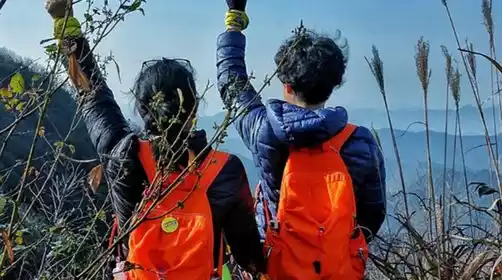Day 1 Shanghai → Qinwang Mountain → Feiziling → Shanghai
All day
Meet at the designated China-TravelNote location between 07:00 and 07:15 to sign in. Depart at 07:15, interactive and itinerary briefing on board, full of laughter and fun all the way!
We arrived at the starting point, Wulian Village, around 10:30. Everyone packed up and got off the bus. The team leader would first lead everyone to warm up, and then we would set off along the trail in a team.
Entering the mountains and forests, you'll find a variety of paths, sometimes dirt roads, sometimes stone steps and ancient paths, making the journey a delightful experience for hikers. Therefore, Qinwang Mountain is also a popular destination for local people in Shaoxing to enjoy the scenery.
We arrived at the Qinwang Mountain Trail around 11:45 AM and began the descent. We continued downhill, passing a colorful staircase, immersing ourselves in the vicissitudes of history. We arrived at Yunmen Temple, a thousand-year-old temple near our base. Next door is the former residence of Wang Xianzhi, a renowned calligrapher from the Eastern Jin Dynasty.
We set out again, climbing through boulders and bamboo forests, conquering the mountain from another direction. Around 1:30 PM, we reached the summit of Qinwang Mountain, overlooking Shaoxing City and Hangzhou Bay in the distance. We could briefly refuel at the summit, which also marked the first checkpoint.
We continued our journey at the right time and arrived at the second checkpoint at 14:30. After entering the bamboo forest, the road condition was good with a small slope. We would soon enter the Tongkang Bamboo Sea and go up to the Feiziling Ancient Trail. After passing the Feizi Temple, we would go down to the end point, Zihongshan Village.
Board the return bus around 17:00.
We returned to the departure point in Shanghai around 20:00, reluctant to leave and agreed to see each other again.
There will be slight adjustments to the closing points in autumn and winter, and the specific details will be announced by the tour leader on the day!
It gets dark earlier in autumn and winter, so it's recommended to bring a headlamp! Also, bring a set of clean clothes to change into after your hike to avoid getting cold in wet clothes!








